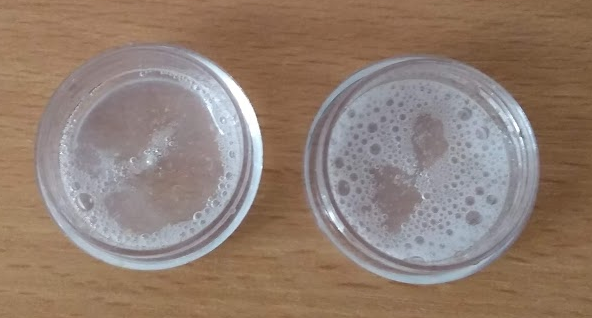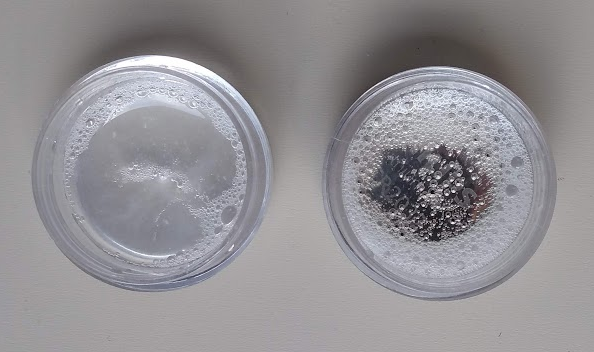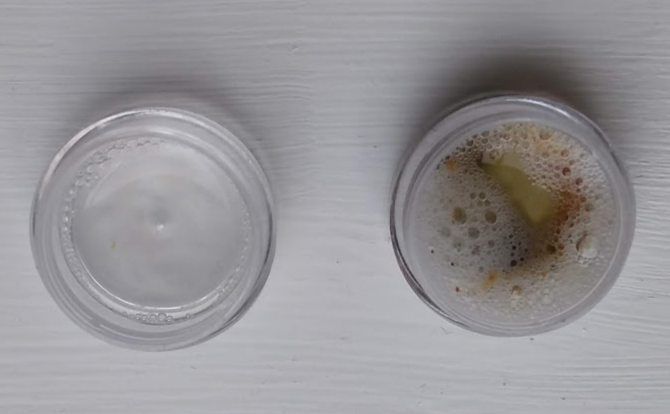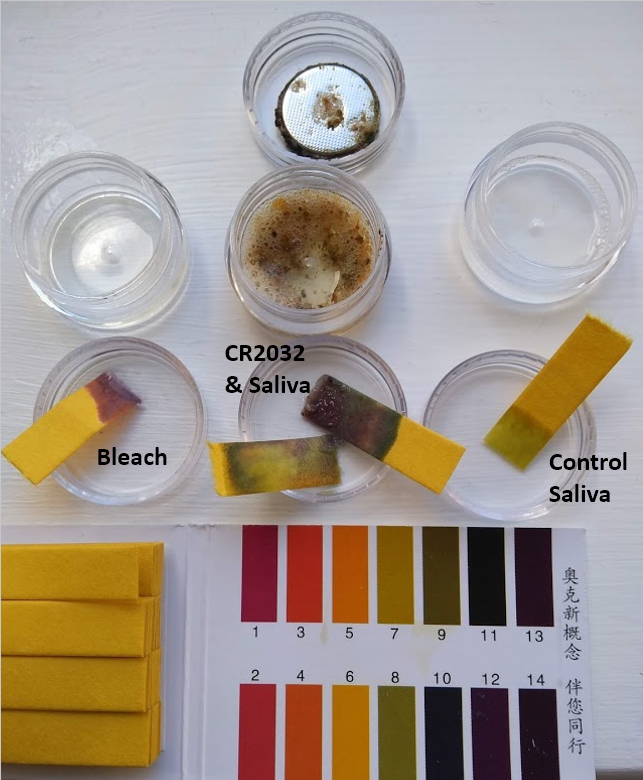In which we try to answer:
Can saliva be a proxy for "tissue fluids" in battery injury tests?
Warning, this log is not going to look nice if you are squeamish about spit
I ran a basic experiment to answer this. From the previous log, we found out that hydrolysis of tissue fluids was believed to be the main mechanism of harm to people who swallow coin cell batteries. If we could use saliva as a proxy for the "tissue fluids" found in the throat/oesophagus, we could expose them to the sources of current provided by the coin cells and set a baseline against which to try and improve our energy stores. I don't know why we didn't do this experiment in school - it was rather fun.
Equipment:
- 5ml acrylic screw lid jar. Commonly available on eBay as "cosmetic jar with lid". Qty 3. You may have some of these left from your #TritiLED enclosures...
- Spit. Freely available. Suggest you try and clear your mouth of food and drink before providing the samples. Qty: about 3 - 5mm depth in each jar.
- CR2032 coin cell, new. I used a Philips one as I thought using a brand name would add an air of authenticity that this experiment has no other source of! Qty 1.
- Voltmeter / multimeter. Qty 1.
- Stopwatch/clock. Qty 1.
- Litmus paper and colour chart. Qty 3 strips.
- Domestic bleach. As a comparator. Qty 1 drop BE CAREFUL.
- Plastic tweezers or something non-conductive to pick up the battery out of the jar. Qty 1.
- Inert surface and disposable absorbent (toilet paper/kitchen roll) material to wipe battery off with. Qty a few sheets.
- Maybe vinyl/latex gloves, glasses, old clothing and somewhere to wash skin if you get bleach or hydrolised saliva on it.
Method
- Take two jars and spit in them to approximately equal levels. One will receive the coin cell and the other will be our control sample.
Measure your coin cell voltage with the voltmeter/DMM. Nominally they are 3V but open circuit they can be 3.3V for a new one.
Add your coin cell with the anode (negative terminal) facing down. Bear in mind that anode and cathode can get switched around when people describe coin cell electrolysis. We're going to refer the anode (smaller face) and cathode (positive, often marked with an etched or stamped "+" and wraps round the sides of the cell) as they are marked on the cell.
Start your stopwatch/timer and put the lids on the jars. I did this experiment at around 18°C although the reaction in the case of the battery being actually swallowed is going to be much nearer 37°C.
After 2 hours have elapsed, put on whatever protective equipment or clothing you deem necessary. Put a drop of bleach in the remaining jar and open the lids of the two saliva jars.
Get your litmus paper and colour chart ready for comparison. Dip a piece of litmus paper in the control sample of saliva and note the colour score from the colour chart. Then repeat for the coin cell saliva sample and the bleach. Be quick making your comparison with bleach - the litmus colour starts to quickly fade as it is bleached... ...by the bleach.
Use the tweezers to remove the coin cell from the saliva. Wipe it down with the absorbent material and measure the voltage. Dispose of battery, bleach and saliva samples safely and wash containers.
Results
So, bleach is around pH 12, (my) saliva is around pH 7 and saliva-hydrolised-by-CR2032 for two hours seems to be between pH 10-13. From a rough comparison of the open circuit voltage between the start (3V) and end (2.8V) of the 2 hour test, using the chart in this analysis of coin cell capacity, we may have used ~150mAh or, at 2.7V (the voltage when the current was flowing), ~1500 J.
Conclusion
Given the effect of the hydrolysis on the saliva, I conclude that we can use saliva as a proxy for oesophageal fluids in future tests. As a baseline, it appears that a 2hr exposure of a small quantity of saliva to a new CR2032 cell makes something almost-as or as caustic as bleach.
 Simon Merrett
Simon Merrett



Discussions
Become a Hackaday.io Member
Create an account to leave a comment. Already have an account? Log In.